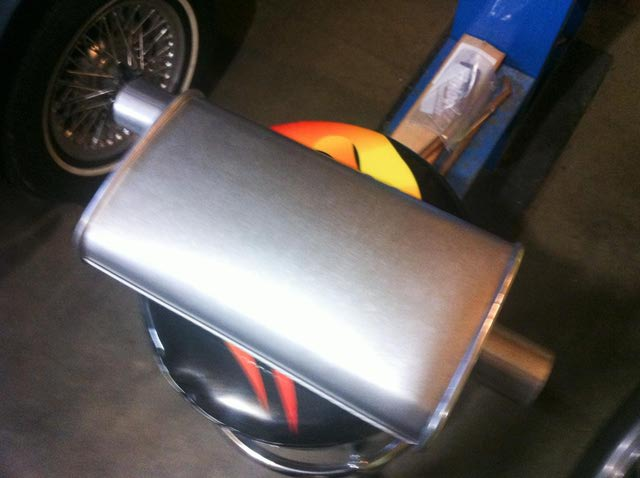It doesn’t take much to diagnose a loud muffler. You can easily hear this problem, and in some instances, you can even see it too. You may find it in the form of either a tailpipe left to drag behind your vehicle or a loose exhaust.
The noise may already bother you enough, but it’s important to point out that this is not the sole hazard this type of problem produces. Aside from possibly getting a ticket from the highway patrol, the noisy muffler also poses grave health problems. Once your vehicle’s exhaust system becomes unreliable or faulty, whether it simply breaks down due to age or it suffers a hole brought about by the rough and sharp edges of a regular pothole or a rock, or even just the simple act of a tailpipe slowly working its way loose from your vehicle , odorless but potentially deadly fumes can reenter your ride via the passenger compartment.
Because these fumes are odorless, they’re going to be hard to detect. These fumes can make you and your passengers sick, or in worst case scenarios, even cause death. Another grave consequence of having a faulty muffler or a dragging tailpipe is that every time these units hit the pavement, sparks are created. And we all know the danger that sparks pose when it comes to gasoline-fueled vehicles, don’t we?
This is one of those instances wherein you have to act as soon as possible. Upon finding this problem, you need to be able to either secure the loose tailpipe with an auto clamp or replace your muffler with trusty and durable car parts. If you’re driving a truck, then you need to find a store or a shop that sells high quality and inexpensive truck accessories. Installing these auto parts can be relatively simple and painless, that is, if you act soon after initial diagnosis of your vehicle’s problem.
If it’s just a loose tailpipe, you can easily secure the auto clamp to prevent further damage from taking place in your vehicle’s exhaust system. This simple act can easily save you a year or so before you would have to completely let go of your old muffler, so long as the rest of your exhaust system is fully-functional.
In case you find yourself in a sticky situation, say traveling a long distance only to find that your tailpipe is either detached or broken then the following tips can help you limp along until you find a muffler shop or a garage.
Before you start following any of these tips, it’s important that you wait for your vehicle to be cool enough for you to be able to touch or handle the tailpipe. Tailpipes can get extremely hot, since it’s the part of your vehicle that releases fumes coming from the engine. Remember, wait a while after parking your vehicle before attempting any of these steps.
Here are two “quick-fix” methods which you can use for a few days at most. Choose between these methods to determine which one would be more convenient for you.
Instructions 1:
1. Make sure the tailpipe is clear. Once it is, begin measuring its diameter to have a rough estimate of its size.
2. If you can, find a tin can that is just a bit bigger than your tailpipe’s diameter. Remove the lid and the bottom of the can to produce an open cylinder.
3. If you can’t find a tin can roughly the same size or just a bit larger than your tailpipe, you can use a bigger can. Simply cut the can along its seams so that you can effectively wrap it around your vehicle’s tailpipe. Be careful when cutting the can to avoid injuring yourself.
4. Slide the can over the rusty or the broken part of the pipe and secure it properly.
5. Take two nut clamps and secure the tin can to hold it in place. Before revving off, check if the can is able to stay properly in place throughout your drive.
Instructions 2:
1. If you find that a part of your tailpipe is just about ready to fall off and you believe that this part can’t be saved, then take a rag and use it to wrap around the tailpipe. Remove the rusted or broken part of the tailpipe. If, however, you find that the whole tailpipe is broken, then you have no other recourse but to head straight to a garage or muffler shop.
2. Find some mechanic’s wire, which you can find in auto parts shops and hardware stores (for discount auto parts check out this site). If you’re unable to find mechanic’s wire, then a wire coat hanger will do. Cut off a part of the mechanic’s wire or bend your hanger to straighten it out.
3. Take the wire and wrap it securely around the tailpipe and a durable fixture located under your vehicle. This will help you secure the pipe until you reach a muffler shop or a garage.
4. Try driving a short distance and then check the wire once again to see if the tailpipe is still in place. If you need to, readjust the wire.
Once again, remember that these are incredibly temporary solutions that you can use for a day or two, max. Make an appointment with the muffler shop or a nearby garage as soon as possible.

Silencing the Noisy Muffler
by
Tags:

Leave a Reply